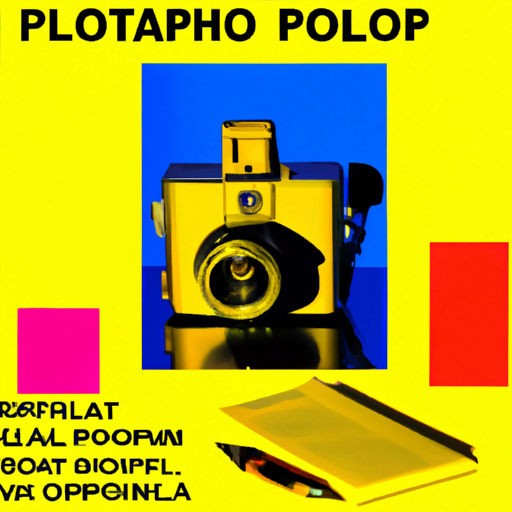
-
Table of Contents
- Designing Note-taking and Writing Interfaces
- The Importance of Designing Note-taking and Writing Interfaces
- Key Principles for Designing Note-taking and Writing Interfaces
- 1. Simplicity and Minimalism
- 2. Customizability and Flexibility
- 3. Seamless Synchronization and Accessibility
- 4. Rich Formatting and Multimedia Support
- Case Studies: Successful Note-taking and Writing Interfaces
- 1. Evernote
- 2. Bear
- Summary
Designing Note-taking and Writing Interfaces

Note-taking and writing are essential skills in today’s fast-paced and information-driven world. Whether you are a student, professional, or simply someone who wants to capture their thoughts and ideas, having a well-designed note-taking and writing interface can greatly enhance your productivity and creativity. In this article, we will explore the key principles and best practices for designing effective note-taking and writing interfaces, backed by research, examples, and case studies.
The Importance of Designing Note-taking and Writing Interfaces
Before diving into the specifics of designing note-taking and writing interfaces, it is crucial to understand why it matters. A well-designed interface can significantly impact the user experience, making the process of note-taking and writing more efficient, enjoyable, and effective. Here are a few reasons why designing these interfaces is important:
- Improved organization: A well-designed interface allows users to easily organize their notes and thoughts, making it easier to find and retrieve information when needed.
- Enhanced focus: A clutter-free and intuitive interface helps users stay focused on their writing or note-taking tasks, minimizing distractions and improving concentration.
- Increased productivity: An interface that streamlines the process of capturing and organizing information can save users valuable time, enabling them to be more productive.
- Boosted creativity: A visually appealing and user-friendly interface can inspire creativity and encourage users to explore new ideas and perspectives.
Key Principles for Designing Note-taking and Writing Interfaces
Now that we understand the importance of designing note-taking and writing interfaces, let’s explore some key principles that can guide the design process:
1. Simplicity and Minimalism
A cluttered interface can overwhelm users and hinder their ability to focus and process information. Therefore, simplicity and minimalism should be at the core of any note-taking and writing interface design. Here are a few ways to achieve this:
- Use a clean and uncluttered layout, with ample white space to give users a sense of visual calmness.
- Minimize the number of buttons, icons, and controls to reduce cognitive load.
- Provide clear and intuitive navigation, allowing users to easily access different sections or features.
2. Customizability and Flexibility
Every user has unique preferences and requirements when it comes to note-taking and writing. Therefore, providing customization options and flexibility in the interface design can greatly enhance the user experience. Here are a few ways to incorporate customizability:
- Allow users to choose their preferred font, font size, and color scheme.
- Provide options for organizing notes, such as folders, tags, or categories, to accommodate different organizational styles.
- Offer different writing modes, such as a distraction-free mode or a split-screen mode for multitasking.
3. Seamless Synchronization and Accessibility
In today’s digital age, users expect their notes and writings to be accessible across multiple devices and platforms. Therefore, seamless synchronization and accessibility are crucial aspects of note-taking and writing interfaces. Here are a few considerations:
- Implement cloud synchronization to ensure that users can access their notes from any device with an internet connection.
- Support integration with popular note-taking apps or platforms, such as Evernote or Google Drive, to provide a seamless experience for users who already use these services.
- Ensure that the interface is responsive and optimized for different screen sizes and devices, including desktops, tablets, and smartphones.
4. Rich Formatting and Multimedia Support
Note-taking and writing often involve more than just plain text. Users may want to include images, videos, links, or other multimedia elements in their notes or documents. Therefore, providing rich formatting and multimedia support is essential. Here are a few features to consider:
- Allow users to easily insert and format images, videos, and audio recordings within their notes or documents.
- Support hyperlinking and embedding of web content to provide additional context or references.
- Offer advanced formatting options, such as headings, bullet points, and numbered lists, to help users structure their content.
Case Studies: Successful Note-taking and Writing Interfaces
Let’s take a look at a couple of case studies that highlight successful note-taking and writing interfaces:
1. Evernote
Evernote is a popular note-taking app that has gained widespread acclaim for its intuitive and feature-rich interface. It incorporates many of the principles we discussed earlier, such as simplicity, customizability, and seamless synchronization. Evernote allows users to create and organize notes in a clean and uncluttered interface, with options to customize fonts, colors, and layouts. It also offers seamless synchronization across devices and integrates with various platforms, making it a versatile tool for note-taking and writing.
2. Bear
Bear is a note-taking app specifically designed for writers. It focuses on simplicity and minimalism, providing a distraction-free environment for writing. Bear offers a clean and elegant interface with a minimal set of formatting options, allowing writers to focus on their words without unnecessary distractions. It also supports Markdown, a lightweight markup language, which provides a simple and intuitive way to format text. Bear’s interface exemplifies the power of simplicity in enhancing the writing experience.
Summary
Designing note-taking and writing interfaces is a critical aspect of enhancing productivity, creativity, and user experience. By following key principles such as simplicity, customizability, seamless synchronization, and rich formatting support, designers can create interfaces that empower users to capture their thoughts and ideas effectively. Successful examples like Evernote and Bear demonstrate the impact of well-designed interfaces on note-taking and writing experiences. So, whether you are a student, professional, or simply someone who loves to write, investing in a well-designed note-taking and writing interface can greatly enhance your productivity and enjoyment.
